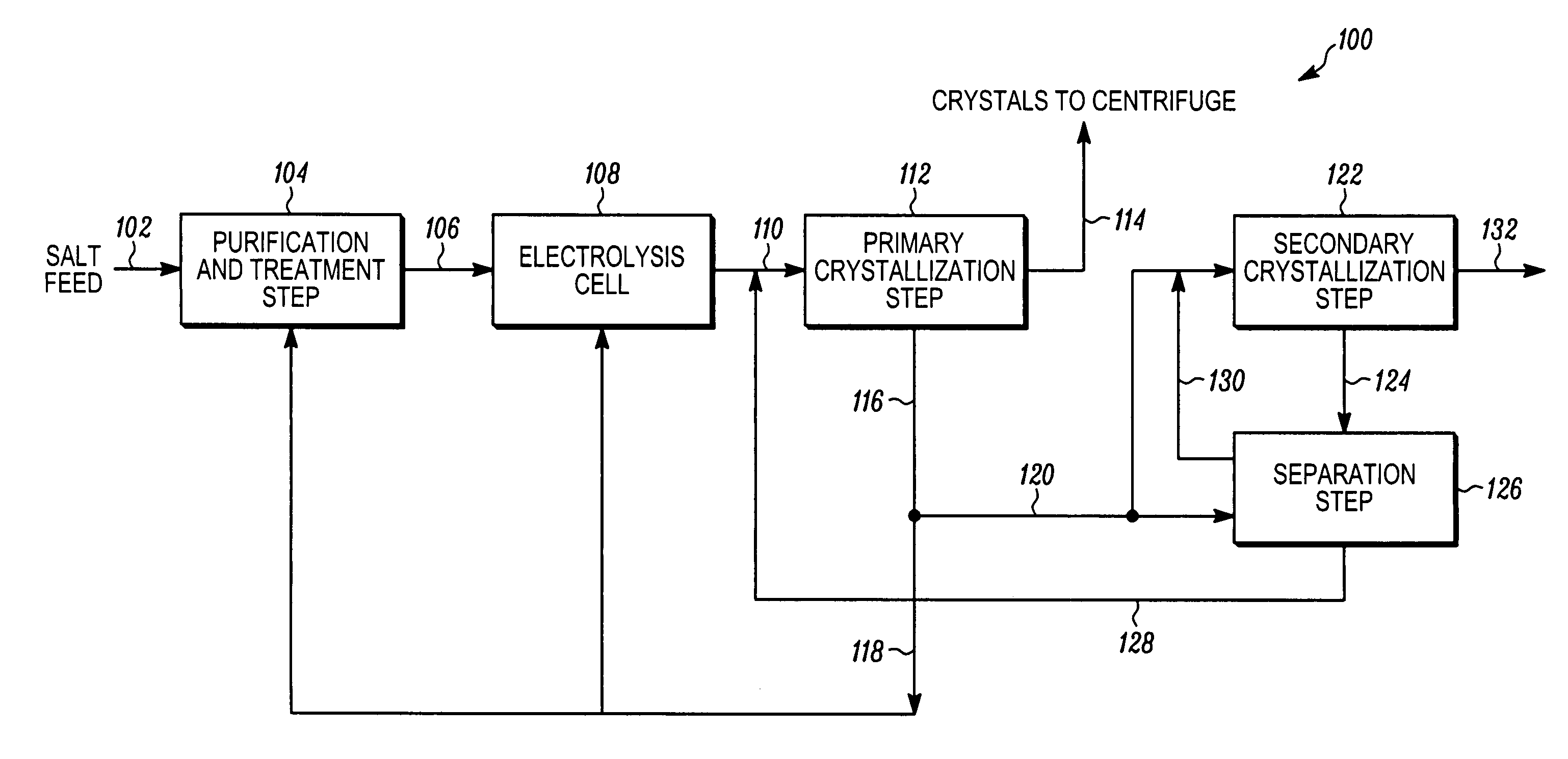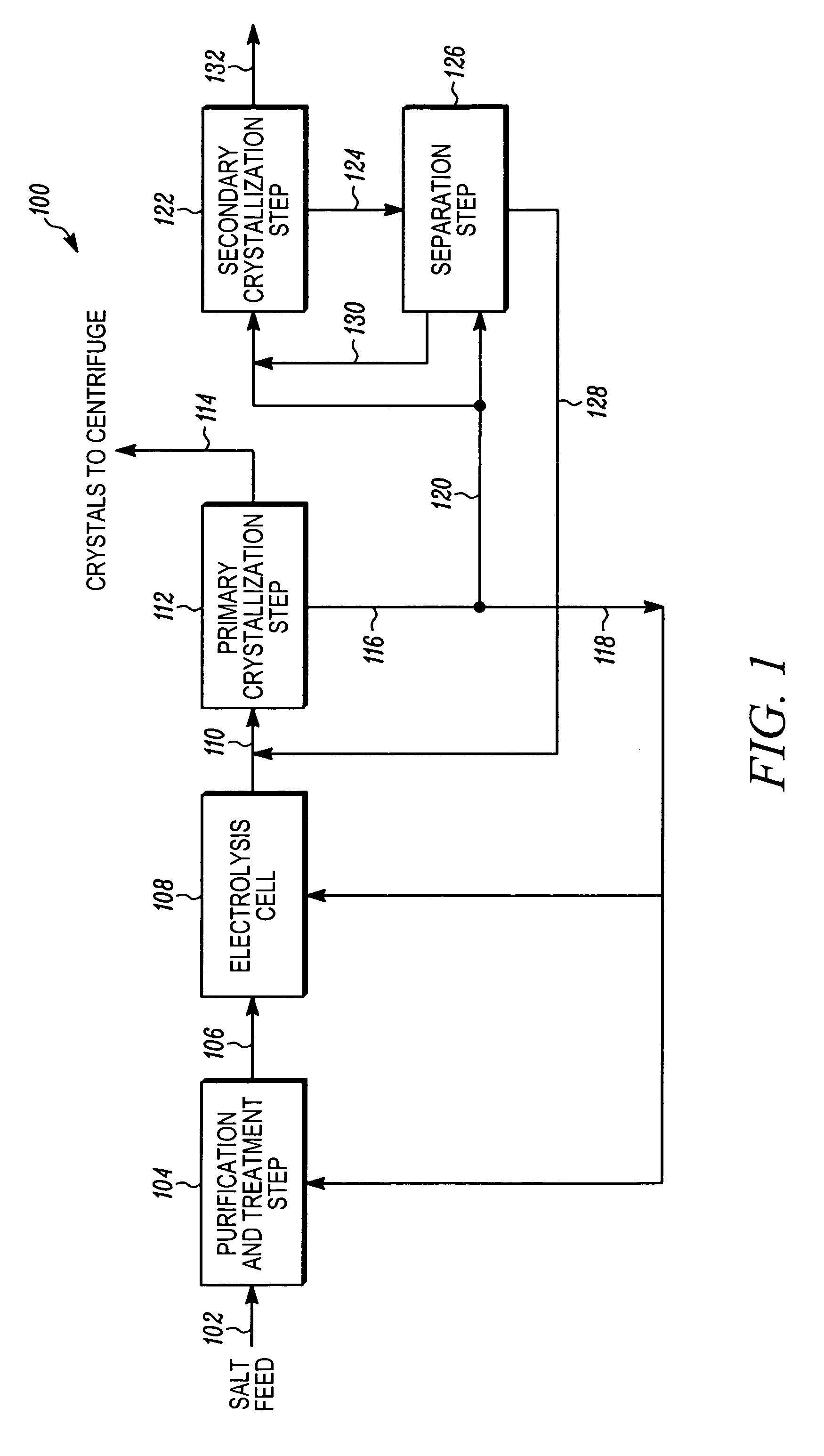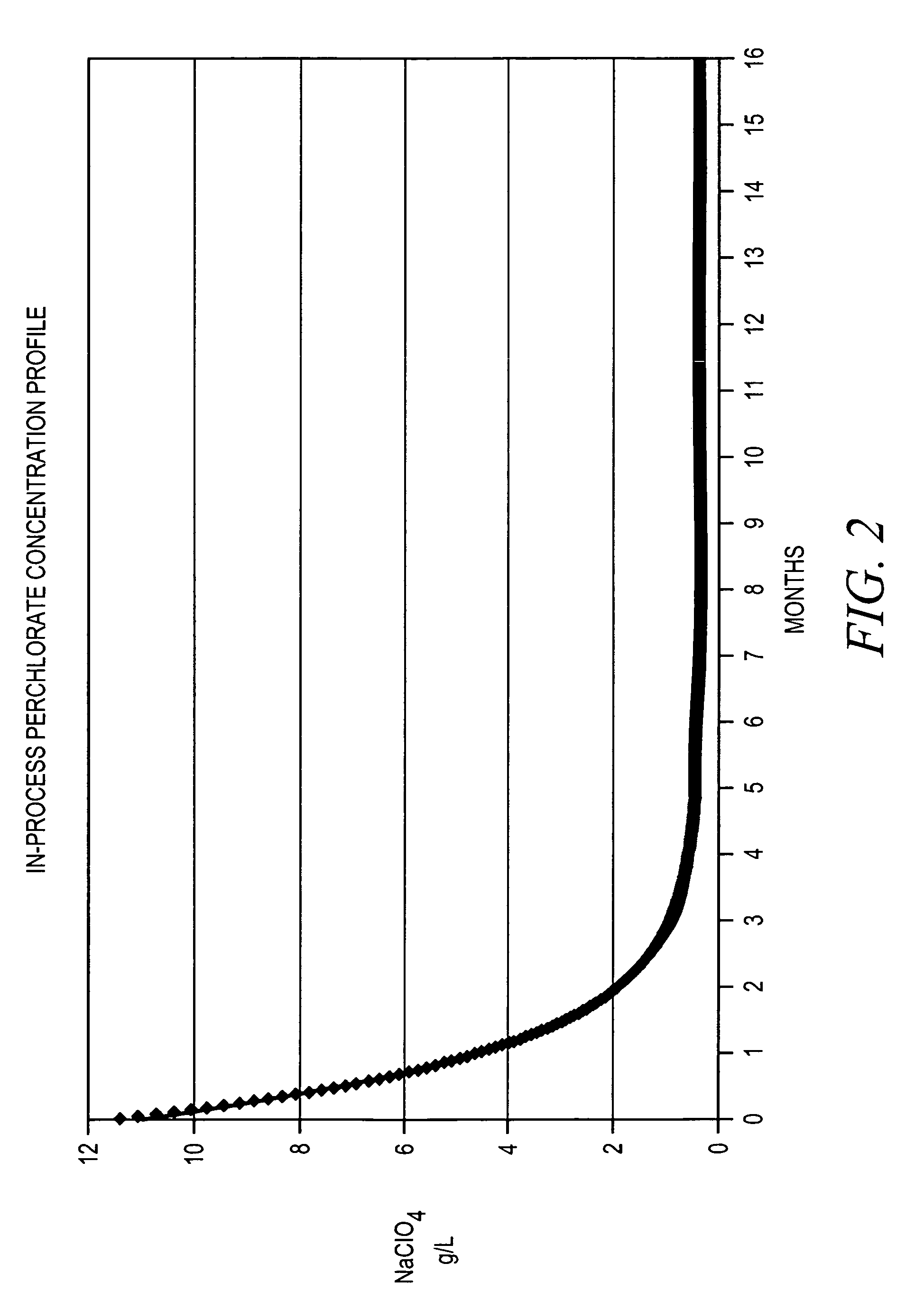Perchlorate removal from sodium chlorate process
a technology of perchlorate and electrolysis, which is applied in the direction of separation processes, halogen oxides/oxyacids, polycrystalline material growth, etc., can solve the problems of sodium perchlorate, sodium perchlorate especially, and increase the energy consumption per ton of chlorate produced
- Summary
- Abstract
- Description
- Claims
- Application Information
AI Technical Summary
Benefits of technology
Problems solved by technology
Method used
Image
Examples
examples
[0021]In accordance with the present invention, sodium chlorate was produced using a closed loop process as described in FIG. 1 and accompanying text. The cell liquor 110 was thus fed to a first vacuum crystallizer for the primary crystallization step 112. A majority portion of the second crystallization step feed stream 120 was fed to a second vacuum crystallizer for the secondary crystallization step 122, together with spent wash solution 130 from a separation step 126 following the secondary crystallization step 122, so that over time as described above sodium perchlorate from cell liquor 110 became concentrated in the second mother liquor.
[0022]The concentration of sodium perchlorate in the first mother liquor 116 was measured after each day the process was run. FIG. 2 shows a graph of the sodium perchlorate concentration as measured in the first mother liquor 116 over time. The measured sodium perchlorate concentration started at 14 g / L and decreased quickly. After 165 days, th...
PUM
| Property | Measurement | Unit |
|---|---|---|
| concentration | aaaaa | aaaaa |
| concentration | aaaaa | aaaaa |
| concentration | aaaaa | aaaaa |
Abstract
Description
Claims
Application Information
 Login to View More
Login to View More - R&D
- Intellectual Property
- Life Sciences
- Materials
- Tech Scout
- Unparalleled Data Quality
- Higher Quality Content
- 60% Fewer Hallucinations
Browse by: Latest US Patents, China's latest patents, Technical Efficacy Thesaurus, Application Domain, Technology Topic, Popular Technical Reports.
© 2025 PatSnap. All rights reserved.Legal|Privacy policy|Modern Slavery Act Transparency Statement|Sitemap|About US| Contact US: help@patsnap.com



